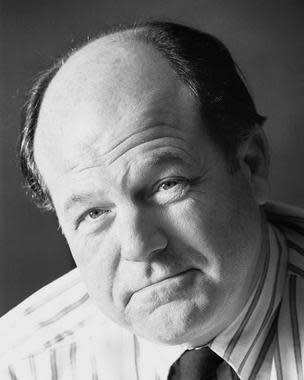As It Were: Runaway slave Jerry Finney was ‘kidnapped’ in Columbus, returned to mistress
Columbus, Ohio, is a crossroads city. Founded in 1812 as a planned town to become the new capital of the state, Columbus is a town of diverse origins.
Platted on the “High Banks opposite Franklinton at the Forks of the Scioto,” Columbus was a focal point where several early American land grants came in contact one with another.
To the west and across the Scioto River was the Virginia Military District. First settled on its north side was the village of Franklinton in 1797. Largely settled by southerners from Kentucky and Virginia, newcomers soon met with settlers from New England who had founded Worthington in 1803.

All of these settlers wondered who would settle where Columbus was located – in a place called the Refugee Tract. Running from Fifth Avenue in the north and Refugee Road to the south, the tract began at the Scioto River and ran east for several miles.
Set aside for residents of Nova Scotia who had lost property because of their revolutionary loyalty, most refugees never made it to Ohio. They sold their land grants for pennies on the dollar to speculative “proprietors.” Some local proprietors founded Columbus under the direction of the Ohio General Assembly. Others sold their land to anyone who wanted to buy it. So Columbus soon found itself the home of people from Pennsylvania, New Jersey and even Canada.
All of these people mixed one with another in the social cauldron of Columbus on several major issues of the day. Some citizens favored temperance or even alcohol prohibition.
Other advocates promoted increased rights for women. In early Ohio, as in much of America, women had few rights to their own children, could not enter contracts on their own and could not vote. Some Ohioans fought for equal rights for women. Other Ohioans opposed them.
But the major issue dividing Ohioans in the early days was slavery. Slavery was forever prohibited in Ohio by the Northwest Ordinance of 1787 and the later Ohio Constitution of 1802. But although slavery was prohibited, runaway slaves could be pursued and returned to their owners.
As It WereColumbus enjoyed growth spurt in early 1850s
As It WereOnce in the millions and reduced to hundreds, bison are back
Some runaway slaves escaped to final freedom in Canada along a path called the Underground Railroad. The escape route was operated by local residents – Black and white – who were opposed to slavery. Columbus was home to several stops along the railroad.
Runaways who decided to stay in Ohio always faced the possibility of capture and return to slavery. By 1840, Columbus was a city of more than 6,000 residents, and more than 500 were African American, many of them emancipated slaves or who had been born free in Ohio. Many others were runaways. It was a firestorm waiting for a spark.
Jerry Finney was the spark.
In 1857, local historian William T. Martin told the story of Jerry Finney in the first published history of Franklin County.
“In the spring of 1846, a case of kidnapping occurred in Columbus. On the 27th of March, after dark, Jerry Finney, a black man, who had resided in Columbus some fourteen or fifteen years, was decoyed over to the town of Franklinton, to the office of William Henderson, Esq., who was, at the time an acting Justice of the Peace in Franklin Township.
“The necessary certificate having been previously prepared, Jerry was forthwith delivered over by the Justice, in his official capacity, to the decoying party, one of whom was Alexander Forbes, of Kentucky, who held a power of attorney from Mrs. Bathsheba D. Long of Frankfort, Kentucky, to whom it was claimed that Jerry belonged, and owed service, as an escaped slave. Jerry begged for a fair trial but in vain, He was immediately handcuffed, and put in a carriage, standing at the door for that purpose … and delivered over to his former mistress.”
“As Jerry was generally known by our citizens (having been cook and general waiter or servant at most of our public houses) his sudden disappearance from our midst, and the time and manner of his capture, created some excitement.”
Henderson, the local justice of the peace, and several others “were arrested and held to bail to answer the charge of kidnapping.” At the September term of the Franklin County Court of Common Pleas, the men were put on trial. William Dennison of Cincinnati led the prosecution. He later became governor of Ohio. The defense was led by Noah Swayne, who later became a justice of the Supreme Court of the United States.
It was a formidable legal clash and lasted for quite some time. The defendants were found guilty, but the verdict later was set aside on appeal.
“Jerry remained in Kentucky for some months as a slave, until by subscription from the citizens of Columbus, a sufficient amount of money was raised to purchase his freedom, and restore him to his family. He returned but the seeds of consumption were sown in his system. Within a short time, he wasted, sickened and died.”
It was a conflict that helped set the stage for the greater struggle called the American Civil War.
Local historian and author Ed Lentz writes the As It Were column for ThisWeek Community News and The Columbus Dispatch.
This article originally appeared on ThisWeek: As It Were: Runaway slave Jerry Finney 'kidnapped' in Columbus
